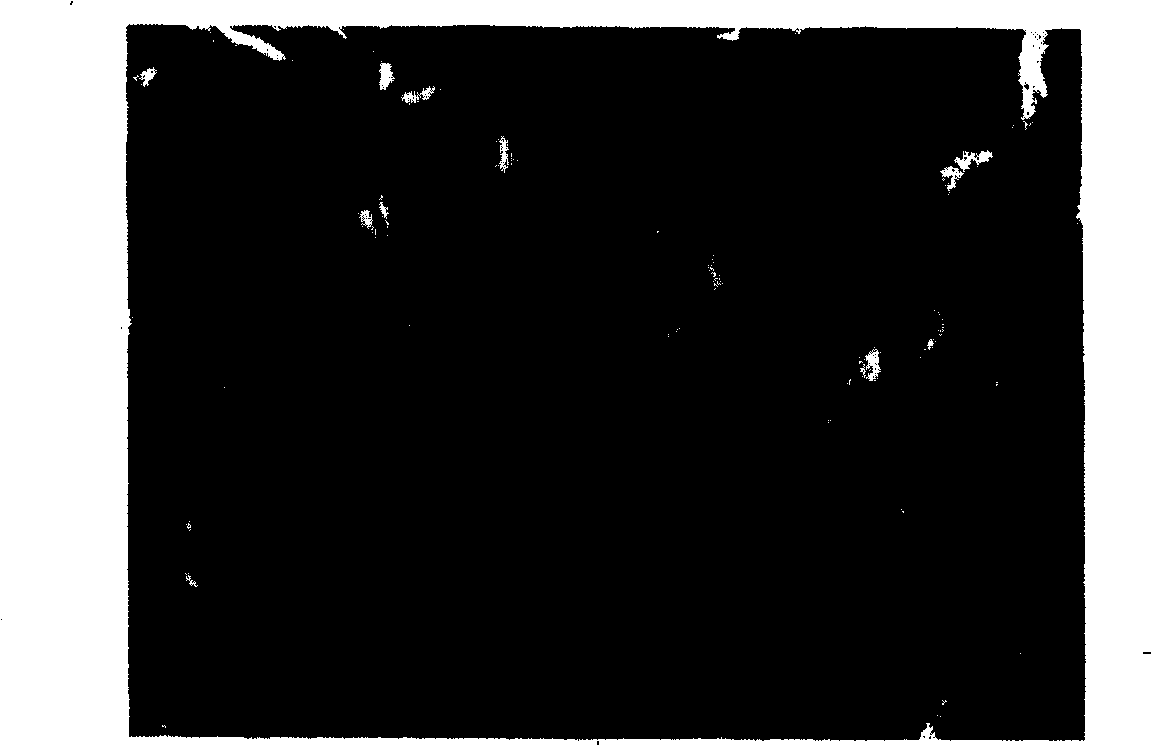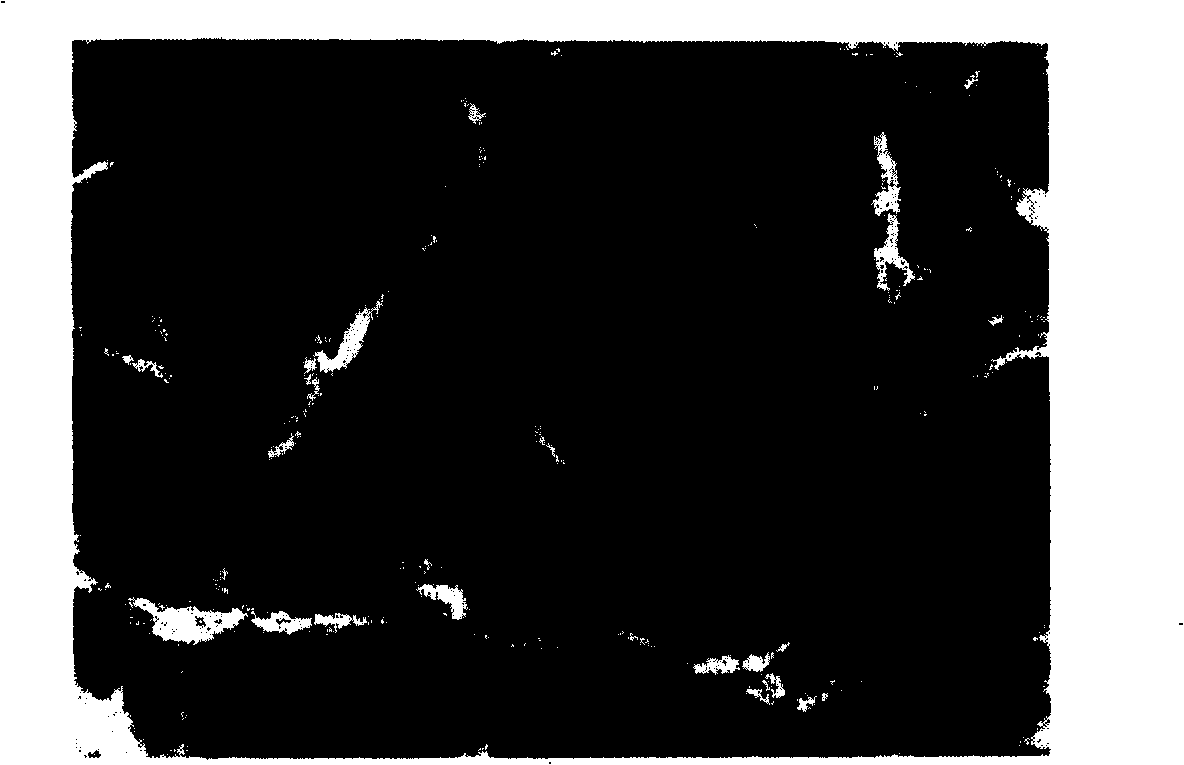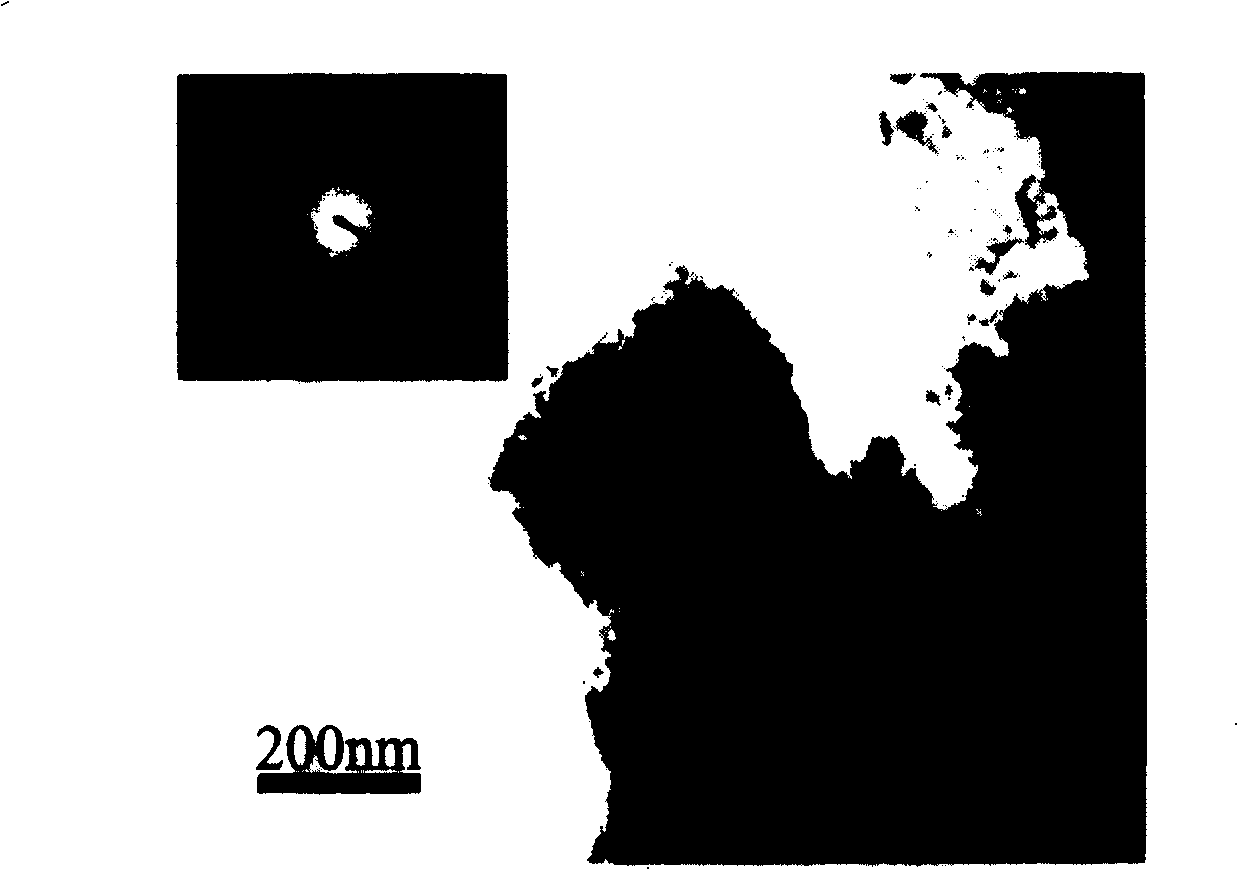Method of preparing C-doped porous nanometer TiO2 photocatalyst with egg shell membrane as template
A nano-photocatalyst and eggshell membrane technology, applied in chemical instruments and methods, physical/chemical process catalysts, chemical/physical processes, etc., can solve the problems of undiscovered research results, public reports, obstacles to the application of TiO2, etc., to achieve rich sources , easy separation, and mild synthesis conditions
- Summary
- Abstract
- Description
- Claims
- Application Information
AI Technical Summary
Problems solved by technology
Method used
Image
Examples
Embodiment 1
[0024] Wash 50g of fresh egg shells with tap water, soak them in 100mL of 2M HCl, wait until the calcium carbonate in the egg shells is decomposed, and then separate to obtain egg shell membranes (EM). Then, clean the EM with deionized water first, then soak it in isopropanol for dehydration, change the solvent every once in a while to remove the water, and soak the obtained EM in isopropanol for later use. Soak the dehydrated EM in the prepared 50 mL of 10 wt% tetrabutyl titanate in isopropanol solution, take it out after 3 hours, and dry it in air for 48 hours. Then, it was placed in a temperature-controllable muffle furnace, heated to 500 °C at a rate of 5 °C / min, and calcined for 3 hours to obtain carbon-doped TiO 2 Porous nanophotocatalyst (C-TiO 2 ).
[0025] SEM analysis shows that the carbon-doped TiO prepared by the present invention 2 Porous nanophotocatalyst, made of cross-linked TiO 2 The macroporous network structure composed of fibers, but compared with the e...
Embodiment 2
[0027] The carbon doped TiO obtained in embodiment one 2 Porous nano-photocatalyst put into 0.02M AgNO 3 Soak in the solution for 24h, soak in 0.02M glucose solution immediately after taking it out for reduction reaction, take it out after 24h, and dry it at room temperature, so as to obtain carbon-doped TiO deposited by silver nanocrystals 2 Porous nanophotocatalyst (Ag / C-TiO 2 -1).
[0028] SEM analysis shows that the porous TiO deposited by silver nanocrystals prepared by the present invention 2 Nanophotocatalysts that maintain the TiO 2 A network of empty tubes. XRD analysis showed that TiO in the catalyst 2 It is in the crystal form of anatase, the particle size is 30-40nm, and silver exists in the form of simple substance. The DRS spectrum shows that the catalyst can absorb 55-65% of visible light with a wavelength in the range of 400-700nm.
Embodiment 3
[0030] The preparation process is the same as that of Example 1, except that the egg shell membrane is firstly mixed with 0.02M AgNO 3 Soak in the solution for 24h, then dehydrate at 20-30°C. Finally, silver nanocrystals and carbon-doped TiO 2 The porous composite photocatalyst (Ag / C-TiO 2 -2)
[0031]SEM analysis shows that the silver nanocrystal prepared by the present invention and carbon-doped TiO 2 The porous composite photocatalyst is made of TiO 2 Compared with the original EM template, the macroporous network structure composed of cross-linked fibers, the diameter of the fibers and the diameter of the macropores shrink slightly. TEM analysis showed that TiO 2 The fiber is a hollow tube structure, and its tube wall is composed of nanoparticles with a diameter of about 10-40nm. XRD analysis further indicated that the TiO 2 The nanoparticles are in anatase crystal form, and the silver exists in a single substance form, with a particle size of 70-80nm. The DRS spec...
PUM
 Login to View More
Login to View More Abstract
Description
Claims
Application Information
 Login to View More
Login to View More - R&D
- Intellectual Property
- Life Sciences
- Materials
- Tech Scout
- Unparalleled Data Quality
- Higher Quality Content
- 60% Fewer Hallucinations
Browse by: Latest US Patents, China's latest patents, Technical Efficacy Thesaurus, Application Domain, Technology Topic, Popular Technical Reports.
© 2025 PatSnap. All rights reserved.Legal|Privacy policy|Modern Slavery Act Transparency Statement|Sitemap|About US| Contact US: help@patsnap.com



